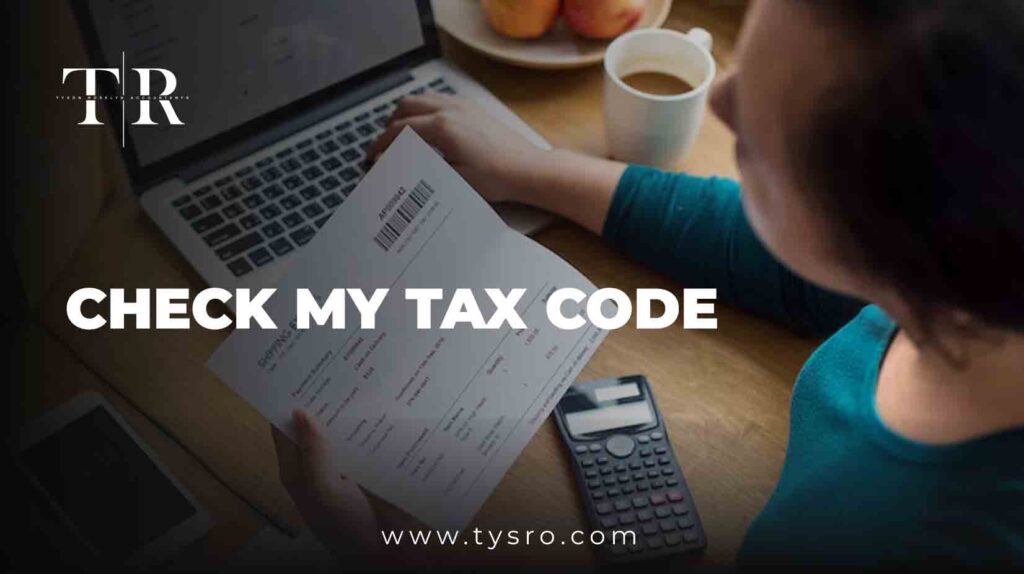Introduction
Understanding your tax code is an important part of managing your finances, especially if you want to make sure you’re paying the right amount of tax. If you’ve ever asked yourself, “How do I check my tax code?”, you’re not alone. It’s something that can be confusing for many people, but once you understand how to check your tax code, you’ll be in a better position to manage your money.
In this article, we’ll walk you through the steps to check your tax code, explain why it’s important, and show you how to make sure you’re not overpaying or underpaying tax. After all, no one likes surprises when it comes to money!
What is a Tax Code?
Before we dive into how to check my tax code, it’s important to understand what a tax code is and why it matters. Your tax code is used by your employer to calculate how much tax to deduct from your salary each month. It tells them how much of your income is tax-free and how much is taxable.
A tax code is usually made up of numbers and letters. For example, a tax code might look like 1257L, which is the standard tax code for most people in the UK. The numbers represent how much of your income you can earn before being taxed, and the letters indicate your specific circumstances (such as whether you’re eligible for certain allowances).
If you’re unsure about what your tax code means, don’t worry – you’re about to find out how to check my Tax Code and what to do if it’s wrong.
Why You Should Check Your Tax Code
Many people don’t think twice about their tax code, but it’s important to check my your code regularly to ensure that everything is correct. If your tax code is wrong, it could result in overpaying or underpaying tax, which could lead to issues further down the line.
Anecdote:
Take Sarah, for example. She worked as a teacher for years and never thought to check her tax code. One day, she noticed that her paycheck seemed a little lower than usual. After doing some research, Sarah realized that her tax code was wrong, and she had been overpaying for months! Once she corrected her tax code, she received a refund for the excess tax she had paid. By simply taking a moment to check my tax code, Sarah was able to get money back that she’d unknowingly paid to the government. You can also check. payroll manager
Step-by-Step Guide: How to Check My Tax Code
Now that you understand the importance of Check My Tax Code, let’s walk through the process of how to check your tax code. It’s easier than you might think!
1. Locate Your Payslip or P60
The easiest way to find your tax code is by looking at your payslip or P60. Your payslip is typically issued each month or week, and your P60 is provided at the end of the tax year. Both of these documents will include your tax code, usually near the top or in the section where your deductions are listed.
2. Look for the Tax Code
Once you’ve found your payslip or P60, look for the section that lists your tax code. It should be a combination of numbers and letters (e.g., 1257L or BR). This code indicates how much of your income is tax-free and how much is taxable.
3. Understand What Your Code Means
As we mentioned earlier, tax codes are made up of numbers and letters, each with a specific meaning. If you see something like 1257L, it means you have the standard personal allowance of £12,570 (the amount you can earn before paying tax). If your tax code looks different, it could mean you’re entitled to additional allowances or you’re on a different tax rate.
If you’re unsure what your tax code means, you can easily look it up online or refer to the HMRC tax code guide.
4. Check for Mistakes
After Check My Tax Code, the next step is to check for any mistakes. Sometimes, employers or HMRC can make errors when assigning tax codes. For example, if you’ve recently changed jobs, your new employer might not have your full tax information, leading to an incorrect tax code. If your tax code is wrong, it could result in you paying too much or too little tax.
If you think there’s an issue, you can contact HMRC directly. They will be able to help you correct your tax code and ensure you’re paying the right amount of tax.
5. Correcting Your Tax Code
If you notice that your tax code is incorrect, it’s important to get it fixed as soon as possible. You can contact HMRC to notify them of the mistake. They will either issue a new tax code or provide instructions on how to resolve the issue.
Once the tax code is corrected, your employer will be informed, and your future paychecks should reflect the correct tax amount. If you’ve overpaid tax, HMRC may issue you a refund. If you’ve underpaid, they will let you know how to pay the difference. You can also check Benefit in Kind Tax.
Common Tax Code Mistakes to Look Out For
It’s easy to overlook your tax code, but there are some common mistakes to watch for that could affect how much tax you pay:
- Wrong Tax Code on New Jobs – If you’ve recently started a new job and haven’t provided your previous tax information, you might be given a temporary tax code (like BR), which could result in overpaying.
- Tax Code Not Updated After a Life Change – If you’ve had a life change (e.g., marriage, childbirth, or retirement), your tax code might need to be adjusted to reflect your new circumstances.
- Not Claiming All Allowances – If you’re eligible for certain allowances (e.g., marriage allowance), make sure your tax code reflects that. You may need to contact HMRC to ensure this is applied.
- Emergency Tax Code – If your employer doesn’t have all the information needed, they may apply an emergency tax code, which can lead to overpaying. Always check my tax code to make sure it’s not an emergency one unless it’s your first job or you’ve recently changed employment.
How to Avoid Tax Code Mistakes
To avoid making mistakes with your tax code, make sure you keep your personal details up to date with HMRC. For example, if you move house, get married, or change jobs, inform HMRC so they can adjust your tax code accordingly.
Additionally, if you’re self-employed or have multiple income sources, it’s a good idea to keep track of all your tax-related documents and seek professional advice if needed.
FAQs
What is a tax code and why is it important?
A tax code determines how much tax you pay on your income. It tells your employer how much of your earnings are tax-free and how much is taxable, ensuring you're taxed correctly.
How do I check my tax code?
To check your tax code, look at your payslip or P60. Your tax code will be listed there, usually near the top. If you're unsure about what it means, you can check it on the HMRC website.
What should I do if my tax code is wrong?
If your tax code is wrong, contact HMRC immediately to correct it. They will issue a new tax code and inform your employer so you can avoid paying too much or too little tax.
Can I update my tax code if my circumstances change?
Yes, you can update your tax code if your circumstances change, such as getting married, having a child, or changing jobs. Simply inform HMRC to ensure your tax code is accurate.
What are common mistakes in tax codes?
Common tax code mistakes include receiving an emergency tax code, not claiming eligible allowances, or being given the wrong code after changing jobs. Always check your tax code to avoid overpaying.
Conclusion
In conclusion, checking your tax code is an essential part of managing your finances. By ensuring your tax code is correct, you can avoid overpaying or underpaying tax, and keep more of your hard-earned money in your pocket. Whether you’re dealing with a new job, a change in circumstances, or just want peace of mind, taking the time to check my tax code regularly is always worth it. For more information Visit. Tysro.com


